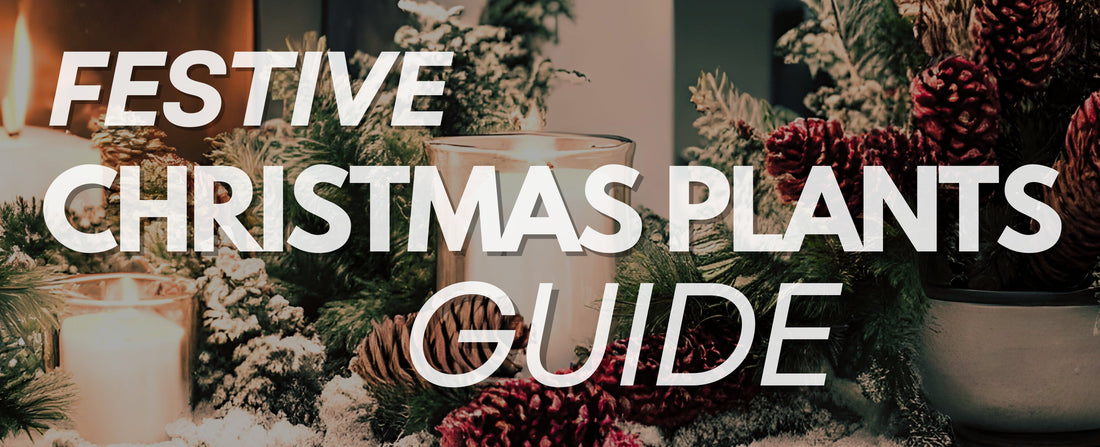
Top 8 Christmas Plants for Home and Garden Care Tips for Holly Poinsettia and More
Share
With the arrival of December, people all over the world start talking about Christmas, a season we take advantage of to spend time with our loved ones and celebrate the New Year. To make these days unforgettable, we recommend decorating your home and/or garden with some very special plants, like the ones we’ll show you below.
Many Christmas plants might already be familiar to you, but others may not be as well-known. Take a look at the images and learn how to keep them looking perfect during this festive season.
Holly
Holly, or Ilex aquifolium, is an evergreen tree or shrub native to Western Asia and Europe, reaching heights between 6 and 20 meters. It has a pyramidal shape with a straight trunk and a dense crown of simple, spiny leaves when young. These leaves are usually green but can be variegated (green and yellow) in some cultivars.
As it requires seasonal changes, holly doesn’t thrive indoors. We recommend keeping it outdoors in full sun or partial shade and watering it about twice a week in summer and less in winter. It can withstand frosts as low as -18°C.

Norfolk Island Pine
The Norfolk Island Pine, scientifically known as Araucaria heterophylla, is an evergreen tree native to Norfolk Island in Australia. Its attractive pyramidal shape features a straight trunk and horizontal branches forming layers. Although it can grow up to 70 meters tall, its slow growth often keeps it under 10 meters for many years.
It needs a sunny location, moderate watering to avoid waterlogging, and mild climates. It can tolerate temperatures as low as -7°C.

Christmas Cactus
The Christmas Cactus, or Schlumbergera truncata, is a species of cactus native to Brazil that can be used as a small hanging plant. It doesn’t have leaves but rather flattened stems responsible for photosynthesis, which is why they are green. It blooms in winter, producing flowers in pink, red, white, or purple.
Indoors, it requires plenty of natural light and very little watering, only when the soil is completely dry. It tolerates mild, occasional frosts down to -2°C.

Poinsettia
The Poinsettia, or Euphorbia pulcherrima, is by far the most well-known Christmas plant. This deciduous shrub is native to Mexico and can grow up to 4 meters tall. It is known by many names, including poinsettia, Christmas flower, or Nochebuena flower. With over 100 cultivars available in red, yellow, and even bicolored varieties, it’s easy to find the perfect one for your home decor.
To keep it alive during and after Christmas, place it in a room with plenty of natural light, away from drafts (both cold and warm), and water it once or twice a week with rainwater or demineralized water. It tolerates frosts down to -3°C.

Mistletoe
Mistletoe, or Viscum album, is a semi-parasitic plant that grows on tree branches and feeds off its host. It is native to Europe, Western and Southern Asia, and America. Its dichotomous stems can reach up to 1 meter long, with yellow-green leaves sprouting from them.
Due to its dependence on a host plant, it is challenging to cultivate. In nature, it is commonly found growing on deciduous trees, though it is also seen on pines. For this reason, it is often used as a dried or even artificial decoration.

Nandina
Nandina, or Nandina domestica, is an evergreen shrub native to East Asia that can reach up to 3 meters in height. Its pinnate leaves are elliptical to lance-shaped, dark green on the top side, and light green underneath. The plant produces pretty pinkish-white flowers and red berries.
Nandina is very resilient, requiring watering every 10 days in winter and 2-3 times per week in summer. While it can be kept indoors during Christmas in a bright room away from drafts, it thrives best outdoors. It tolerates frosts as low as -18°C.

Norway Spruce
The Norway Spruce, also known as the European Spruce or Picea abies, is an evergreen tree native to Central and Eastern Europe. It can grow up to 60 meters tall, with a trunk diameter of 1 to 1.5 meters and a pyramidal crown of green leaves.
While often used as an indoor Christmas tree, it thrives outdoors where it can experience seasonal changes, wind, sunlight, and rain. Indoors, it usually doesn’t survive for long, so it’s better suited for a garden. Water it frequently—2-3 times per week in summer and less during the rest of the year. It can withstand frosts as low as -18°C.

Christmas Rose
The Christmas Rose, or hellebore (Helleborus niger), is a perennial rhizomatous plant native to Central Europe and Asia Minor. It grows up to 50 centimeters tall, with palm-shaped leaves featuring 7-9 lobes and large flowers that can be white, purple, reddish, or pink, blooming in winter.
To thrive, it should be grown outdoors in a protected area with full sunlight. It can also be kept indoors, but fewer flowers will grow with reduced light. Water moderately—2-3 times a week in summer and every 6-7 days the rest of the year. It tolerates frosts down to -12°C.


